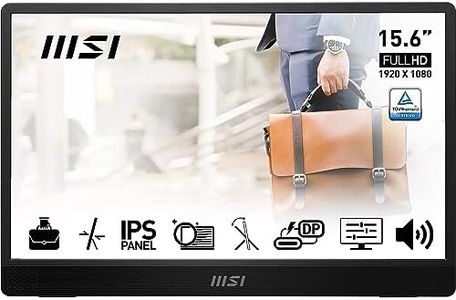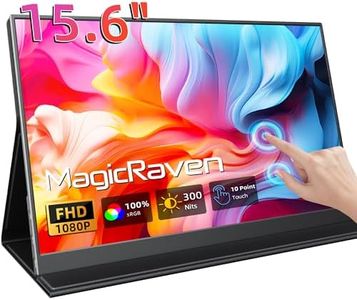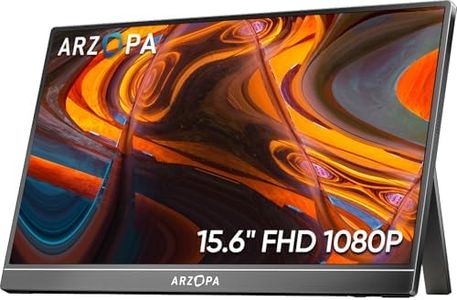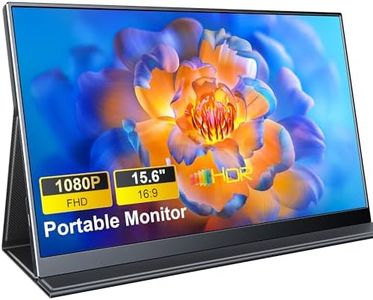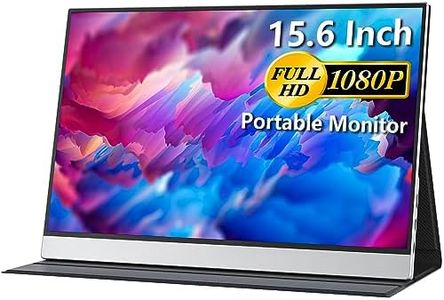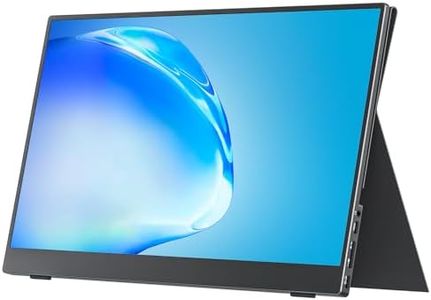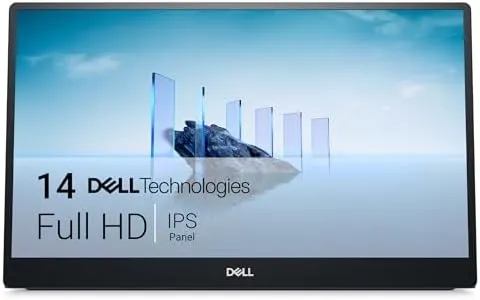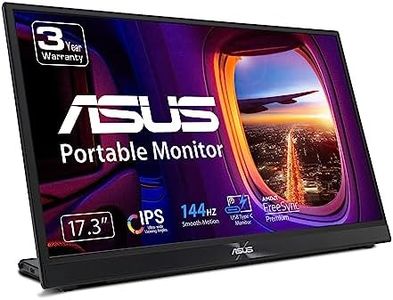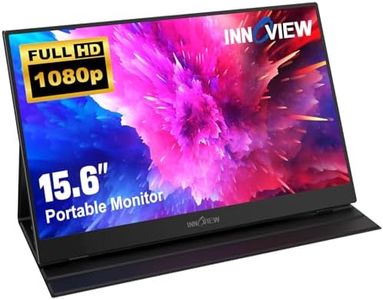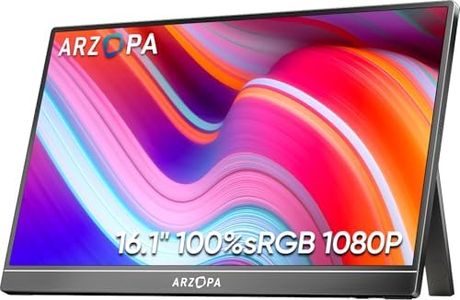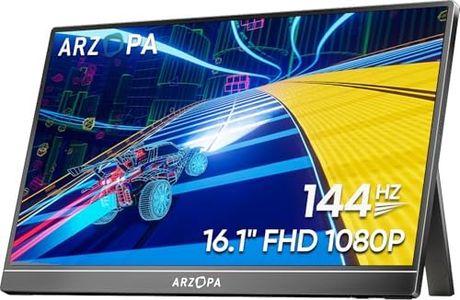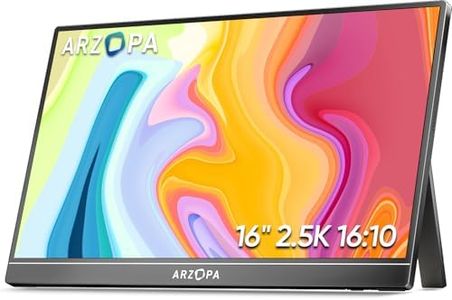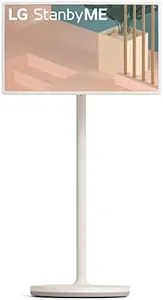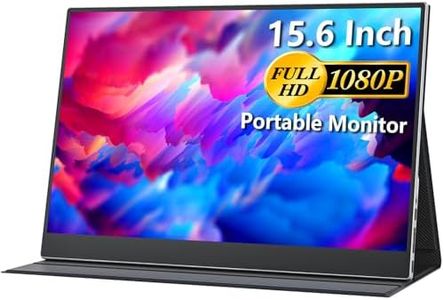We Use CookiesWe use cookies to enhance the security, performance,
functionality and for analytical and promotional activities. By continuing to browse this site you
are agreeing to our privacy policy
10 Best Portable Monitors
From leading brands and best sellers available on the web.Buying Guide for the Best Portable Monitors
When choosing a portable monitor, it's important to consider how and where you plan to use it. Portable monitors can greatly improve your productivity by providing extra screen space for working, gaming, or watching content on the go. Before you buy, think about your main purpose—whether it's for travel, business presentations, gaming, or just extending your laptop screen at a coffee shop. The right choice depends on balancing size, weight, display quality, and connectivity so your monitor fits perfectly into your routine.Screen SizeScreen size refers to the diagonal measurement of the display and determines how much workspace you'll have. Smaller options (around 12–14 inches) are more compact and easy to carry around, great for travelers or those working in tight spaces. Medium sizes (15–17 inches) offer a balance between portability and comfortable viewing, suitable for general use. Larger portable monitors (18 inches and up) give you the most screen real estate, but they are heavier and bulkier, making them better suited for semi-permanent setups. Your need for mobility versus screen space should guide your choice.
ResolutionResolution tells you how many pixels are on the screen and directly affects image sharpness and clarity. Common options include Full HD (1920x1080), which is usually enough for most tasks, while higher resolutions like QHD or 4K give finer detail for creative work or multitasking. If you mainly browse, edit documents, or use standard applications, Full HD is usually sufficient. If you work with high-quality images or want extra crispness for multitasking, opting for a higher resolution makes sense—but keep in mind that higher resolution can also use more power and sometimes make text and icons smaller.
Panel TypeThe panel type affects color reproduction, viewing angles, and how the display looks overall. IPS panels offer good color accuracy and wide viewing angles, which makes them great for watching videos, editing photos, and general work. TN panels are usually cheaper and have faster response times, which might appeal to gamers, but they can have poorer color and narrow angles. OLED panels provide excellent contrast and vibrant colors but are rare and pricier in portable monitors. Think about your usage: for most people, IPS strikes a great balance of quality and cost.
Weight and ThicknessWeight and thickness influence how easy it is to carry your portable monitor. Lighter and thinner models are much easier to take on trips or move between locations, making them perfect for commuters or frequent travelers. Heavier or thicker monitors might have sturdier builds or extra features but can be inconvenient if you move around a lot. Assess how often you expect to carry your monitor and choose a model that matches your portability needs.
Connectivity OptionsConnectivity options determine how you attach your monitor to your devices. Common ports include USB-C (which can handle both power and display data), HDMI, and sometimes micro-USB or DisplayPort. USB-C is the most convenient for modern laptops, tablets, and smartphones, while HDMI allows connection to a wider range of older devices. If you want simple plug-and-play use with your current equipment, make sure the monitor has compatible ports. The more versatile the inputs, the easier it will be to use the monitor with different gadgets.
Built-in FeaturesBuilt-in features such as speakers, stands, touchscreens, or VESA mount support can add convenience but also increase size or weight. If you need sound from your monitor or want to interact directly with the screen (like on tablets), pick models with those functions. Stand designs are important too—some monitors include sturdy adjustable stands, while others rely on thin fold-out covers. Decide which features matter most for your intended use, whether that's video calls, design work, or portable gaming.
Power SourceHow the portable monitor gets power is essential for flexibility. Many use USB-C to draw power directly from your laptop or phone, removing the need for extra power adapters—ideal for travel or desk setups where outlets are limited. Others may need to be plugged into a wall using a separate charger. Consider how and where you'll use your monitor most, and pick an option that matches your need for battery independence or uninterrupted use.
